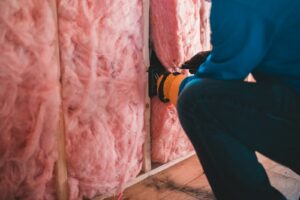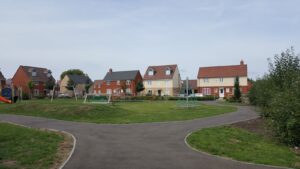Love letters to place
The Sorites paradox is thus: in removing individual crystals, at what point is a mound of salt no longer a mound? The paradox talks in increments. The issue is about scale and structure. The interesting thing about mounds are actually the void spaces between crystals. They enable different configurations of crystals to find some stability. Structure emerges. Without these spaces, the mound wouldn’t work: the thing you don’t see couldn’t hold the structure together. This is about purpose and meaning.
What is the purpose of places? For some, the purpose of places is all about an economic story of growth. This is something you can see. Places with purpose support growth. Coincidentally, they are often places of scale. The increments that make up these structures are people, buildings, neighbourhoods, money. The more you add, the bigger it gets, the better the structure. Right? I was at an excellent conference recently held by the Centre for Housing Research of St. Andrews University. The topic was about Investing in Better Places. Within the conference, Professor Duncan McLennan made two interesting, and necessary observations. One: place fixes capital. Places matter and systems matter. This is about purpose[s], scale[s] and structure[s]. Two, even growth generates problems of inequity. Structures fail, even salt mounds.
Ed Glaeser recently suggested that the first obligation of government is to people, not places. The consequence is a redistribution of population from certain locations to cities, places of growth. Enhanced labour, enabled by well-structured mobility frameworks and consumption of city opportunities enhance the city as a whole. The message is that we should focus on the winners. These are the crystals.
On St. Patricks Day, I was presenting on sustainable placemaking in a small village in the snow dusted hills not far from the Bridge of Allan near Stirling. It was a beautiful evening, where the air and the light danced celebrating spring. This community has been working hard on meeting the Climate Change challenges. The other speaker of the evening was an architect. He spoke of building better buildings with more informed decisions about materials and technologies. I started my presentation with a quote from Simone Weil: ‘What is required if men and women are to feel at home in society and recover their full vitality?’
Weil was a French philosopher. Her concern was about reconstruction after the Second World War. The quote comes from a book called The Need for Roots. The unintended consequence of me being in a small place, a scale I grew up with, talking about roots on St. Patrick’s Day was a narrative more personal than I had expected. I thought of a man that used to come into our pub, a building by a ditch near a crossroads. He emigrated to Kilburn, and really took to the drink. Years later, he came home. He kicked the bottle. Maybe he has recovered some vitality. In this instance, place connected him with meaning, something that seemed important enough for him to leave a city of growth for a house beside a field. Glaeser’s recent discussion is described in Prospect as a ‘love letter to cities’. This I think is the key point. The love letter is an expression about meaning. The thing is that different places carry different meanings. There are different love letters to different places. Just like the voids in the salt mound, we need different kinds of places for reasons we sometimes can’t see.















